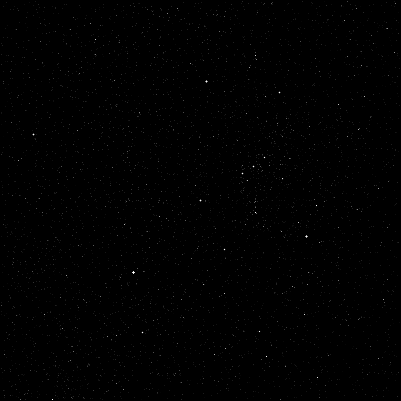
The above is the view of the sun that inhabitants of a hypothetical planet around Barnard's Star would have. It is one of the few stars from which the sun would be even a noticeable star. The sun's absolute magnitude is about 4.8, meaning that even from a distance of 20 parsecs (65 light years), it would have a magnitude of 6.3 and be all but invisible to the (human) unaided eye. From Barnard's Star, however, the sun would shine at magnitude 1.1—a first magnitude star! Sadly, though, it would only be the third brightest star in its constellation, Orion.
The sun is the first-magnitude star at center, making a sort of extension to Orion's three-star belt. Above it and slightly to the right is Betelgeuse, which is brighter still than the sun—even at a distance of roughly 130 parsecs, or 430 light years. Since Barnard's Star is only about 1.8 parsecs (5.9 light years) distant, you wouldn't expect Betelgeuse's brightness to change considerably, and it doesn't. Note that Sirius, at the lower left, has changed its apparent location quite a bit, however. It is also somewhat dimmer.
It used to be thought that Barnard's Star harbored a planet of some sort, due to gravitational wobbles detected in the star's motion across the sky. It now seems that the wobble was due to equipment error.
Copyright (c) 2000 Brian Tung